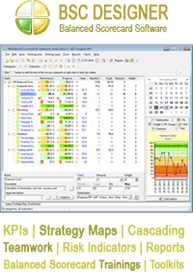The Importance of HR KPI
The Human Resource Key Performance Indicators or HR KPIs are metrics used to measure employees’ performance in relation to the organization’s objectives. It measures how employees contribute to the overall performance of their company. Since different organizations differ in many ways, such as in the nature of their operations and objectives, KPIs also vary. Though all are quantitative, how they are calculated differ from one organization to another. Regardless of the different standards used in measuring KPI, the important thing is that it puts into focus the organization’s most valuable asset – its human resource.
What these key performance indicators generally do is identify the strengths and weaknesses of the people in a certain company’s employ. Data regarding an employee’s work performance serve as input for these metrics. It will then be evaluated using a scoring system standardized within the company. Its results show what happened and when or where it happened. It does not, however, give answers as to why it happened.
Let us take for example a very simple revenue per employee KPI of a sales staff. The raw metric result will perhaps show the number and type of products the staff member has sold for the week. Let us say he sold more than the average sales for item 1 but less than the average for item 2. The metrics show us the facts, but it does not tell us why this is so. This could mean that the employee is good in selling item 1 but has difficulty selling item 2 for some reason. Without metrics, this would not have been known. However, because of metrics, the management can then pinpoint this possible problem. They may be prompted to ask the employee questions to know what is wrong then take necessary actions to help the employee improve his sales skills. For areas at which the employee excels, he could be commended, given opportunities for growth or compensated, depending on the company’s policy.
The indicator stated above is specifically job related. It helps employees and management alike determine what needs to be done to promote personal and organizational growth. For the employee, it could mean taking more responsibility or striving to better his skills. For the management, it could be coaching or any other step that leads to overall improvement.
There are also metrics that attempt to measure an employee’s attitude or disposition towards his job. This looks into aspects, such as cooperation, teamwork, leadership skills, and the like. The HR department uses the results of these metrics in determining what courses of action can be applied to improve productivity. If the metrics help identify stresses or conflicts in the workplace, then actions are taken to eliminate them. Likewise, if it is found that their human assets lack leadership skills or have problems working in a group, then training programs could be made to address this.
Other common HR KPIs include absence rate, human investment ration, training costs, training hours per employee, turnover rate, acceptance rate, and average remuneration. Why companies use these KPIs should be obvious. Whatever the metrics may be, they share one common goal – increasing productivity.
—
If you are interested in hr kpi, check this web-site to learn more about hr dashboard.


